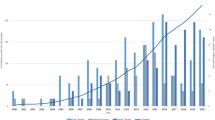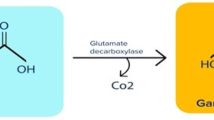Abstract
The non-reducing disaccharide trehalose is a singular molecule, which has been strictly conserved throughout evolution in prokaryotes (bacteria and archaea), lower eukaryotes, plants, and invertebrates, but is absent in vertebrates and—more specifically—in mammals. There are notable differences regarding the pivotal roles played by trehalose among distantly related organisms as well as in the specific metabolic pathways of trehalose biosynthesis and/or hydrolysis, and the regulatory mechanisms that control trehalose expression genes and enzymatic activities. The success of trehalose compared with that of other structurally related molecules is attributed to its exclusive set of physical properties, which account for its physiological roles and have also promoted important biotechnological applications. However, an intriguing question still remains: why are vertebrates in general, and mammals in particular, unable (or have lost the capacity) to synthesize trehalose? The search for annotated genomes of vertebrates reveals the absence of any functional trehalose synthase gene. Indeed, this is also true for the human genome, which contains, however, two genes encoding for isoforms of the hydrolytic activity (trehalase). Although we still lack a convincing answer, this striking difference might reflect the divergent evolutionary lineages followed by invertebrates and vertebrates. Alternatively, some clinical data point to trehalose as a toxic molecule when stored inside the human body.

Similar content being viewed by others
References
Argüelles JC (2000) Physiological roles of trehalose in bacteria and yeast: a comparative analysis. Archiv Microbiol 174:217–224
Avonce N, Mendoza-Vargas A, Morett E, Iturriaga G (2006) Insights on the evolution of trehalose biosynthesis. BMC Evol Biol 6:109
Avonce N, Wuyts J, Verschooten K, Vandesteene L, Van Dijck P (2010) The Cytophaga hutchinsonii ChTPSP: first characterized bifunctional TPS–TPP protein as putative ancestor of all eukaryotic trehalose biosynthesis proteins. Mol Biol Evol 27:359–369
Buts JP, Stilman C, Bernasconi P, Neirinck C, De Keyser N (2008) Characterization of α, α-trehalase released in the intestinal lumen by probiotic Saccharomyces boulardii. Scand J Gastroenterol 43:1489–1496
Chen Q, Hadadd GG (2004) Role of trehalose phosphate synthase and trehalose during hypoxia: from flies to mammals. J Exp Biol 207:3125–3129
Collins CH, Clegg JS (2004) A small heat-shock protein, p26, from the crustacean Artemia franciscana protects mammalian cells (Cos-1) against oxidative damage. Cell Biol Internatl 28:449–455
Crowe JH (2007) Trehalose as a “chemical chaperone”: fact and fantasy. Adv Exp Med Biol 594:143–158
Delorge I, Janiak M, Carpentier S, Van Dijck P (2014) Fine tuning of trehalose biosynthesis and hydrolysis as novel tools for the generation of abiotic stress tolerant plants. Frontiers Plant Sci 14:147
Eastmond P, Graham IA (2003) Trehalose metabolism: a regulatory role for trehalose-6-phosphate a regulator of sugar metabolism in plants? Curr Opin Plant Biol 6:231–235
Elbein AD, Pan YT, Pastuszak I, Carroll D (2003) New insights on trehalose: a multifunctional molecule. Glycobiology 13:17–27
González-Párraga P, Sánchez-Fresneda R, Zaragoza O, Argüelles JC (2011) Amphotericin B induces trehalose synthesis and simultaneously activates and antioxidant enzymatic response in Candida albicans. Biochim Biophys Acta 1810:777–783
Guo N, Puhlev I, Brown DR, Mansbridge J, Levine F (2000) Trehalose expression confers desiccation tolerance on human cells. Nat Biotechnol 18:168–171
Honda Y, Tanaka M, Honda S (2010) Trehalose extends longevity in the nematode Caenorhabditis elegans. Aging Cell 9:558–569
Ishihara R, Taketani S, Sasai-Takedatsu M, Kino M, Tokunaga R, Kobayashi Y (1997) Molecular cloning, sequencing and expression of cDNA encoding human trehalase. Gene 202:69–74
Kandror O, DeLeon A, Goldberg AL (2002) Trehalose synthesis is induced upon exposure of Escherichia coli to cold and is essential for viability at low temperatures. Proc Natl Acad Sci USA 99:9727–9732
Lunn JE, Delorge I, Figueroa CM, Van Dijck P, Stitt M (2014) Trehalose metabolism in plants. Plant J 79:544–567
Mattos Martins MC, Hejazi M, Fettke J, Steup M, Feil R et al (2013) Feedback inhibition of starch degradation in Arabidopsis leaves mediated by trehalose-6-phosphate. Plant Physiol 163:1142–1163
Nunes C, Schuelpmann H, Delatte TL, Wingler A, Silva AB et al (2013) Regulation of growth by the trehalose pathway: relationship to temperature and sucrose. Plant Signal Behav 8:e26626
Ohtake S, Wang J (2011) Trehalose: current use and future applications. J Pharm Sci 100:2020–2053
Pellereone FJ, Archer SK, Behm CA, Grant WN, Lacey MJ, Somerville AC (2003) Trehalose metabolism genes in Caenorhabditis elegans and filarial nematodes. Int J Parasitol 33:1195–1206
Richards AB, Krakowka S, Dexter LB, Schmid H, Wolterbeek APM, Waalkens-Berendsen DH, Arai S, Kurimoto M (2002) Trehalose: a review of properties, history of use and human tolerance, and results of multiple safety studies. Food Chem Toxicol 40:871–898
Sacktor B (1968) Trehalase and the transport of glucose in the mammalian kidney and intestine. Proc Natl Acad Sci USA 60:1007–1014
Sánchez-Fresneda R, Martínez-Esparza M, Maicas S, Argüelles JC, Valentín E (2014) In Candida parapsilosis the ATC1 gene encodes for an acid trehalase involved in trehalose hydrolysis, stress resistance and virulence. PLoS One 9:e99113
Scheibling RE (1980) Carbohydrases of the pyloric caeca of Oraester reticulatus (L.) (Echinodermata: asteroidea). Comp Biochem Physiolol 67:297–300
Schluepmann H, Pellny T, Van Dijen A, Smeekens S, Paul M (2003) Trehalose-6-phosphate is indispensable for carbohydrate utilization and growth in Arabidopsis thaliana. Proc Natl Acad Sci USA 100:6849–6854
Singer MA, Lindquist S (1998) Multiple effects of trehalose on protein folding in vivo and in vitro. Mol Cell 1:639–648
Tournu H, Fior A, Van Dijck P (2013) Relevance of trehalose in pathogenicity: some general rules, yet many exceptions. PLoS Pathog 9:e1003447
Van Handel E (1969) Does trehalose and trehalase function in renal glucose transport? Science 163:1075–1076
Vandesteene l, López-Galvis L, Vanneste K, Feil R, Maere S, Lammens W, Rolland F, Lunn JE, Avonce N, Beecjman T, Van Dijck P (2012) Expansive evolution of the trehalose-6-phosphate phosphatase gene family in Arabidopsis. Plant Physiol 60:884–896
Wegener G, Macho C, Schlöder P, Kamp G, Ando O (2010) Long-term effects ofthe trehalase inhibitor trehazolin on trehalase activity in locust flight muscle. J Exp Biol 213:3852–3857
Xu J, Bao B, Zhang Z-F, Yi Y, Xu W-H (2009) Identification of a novel gene encoding the trehalose phosphate synthase in the cotton bollworm Helicoverpa armigera. Glycobiology 19:250–257
Yu Y, Zhang H, Zhu G (2010) Plant-type trehalose synthetic pathway in Cryptosporidium and some other apicomplexans. PLoS One 5:e12593
Zaparty M, Hagemann A, Bräsen C, Hensel R, Lupas AN, Brinkmanann H, Siebers B (2013) The first prokaryotic trehalose synthase complex identified in the hyperthermophilic crenarcheon Thermoproteus tenax. PLoS One 8:e61354
Acknowledgments
I wish to thank my colleague Dr. D. García (Dept. of Zoology) for her critical reading of the manuscript and fruitful discussions, and to J. P. Guirao-Abad for his help with the graphics. I am truly indebted to Dr. M. J. López-Andreo (SAI, Universidad de Murcia) for her long and patient work with the genomic analysis. The experimental work was supported by Grant PI12/01797 (Ministerio de Economía y Competitividad, ISCIII, Spain). I am also indebted to the financial contract provided by Cespa Servicios Urbanos de Murcia, S.A.
Conflict of interest
The author declares no competing financial interests.
Author information
Authors and Affiliations
Corresponding author
Rights and permissions
About this article
Cite this article
Argüelles, JC. Why Can’t Vertebrates Synthesize Trehalose?. J Mol Evol 79, 111–116 (2014). https://doi.org/10.1007/s00239-014-9645-9
Received:
Accepted:
Published:
Issue Date:
DOI: https://doi.org/10.1007/s00239-014-9645-9




